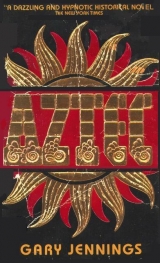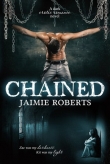
Текст книги "Aztec"
Автор книги: Gary Jennings
Жанр:
Исторические приключения
сообщить о нарушении
Текущая страница: 5 (всего у книги 75 страниц)
My father correctly supposed that a seven-year-old would hardly be enraptured by religious or architectural landmarks, so he took me to the sprawling building at the southeast corner of the plaza. That housed the Uey-Tlatoani's collection of wild animals and birds, and it too was not yet so extensive as it would be in later years. It had been begun by the late Motecuzóma, whose notion was to put on public display a specimen of the land and air creatures to be found in all the parts of all these lands. The building was divided into countless rooms—some mere cubicles, some large chambers—and troughs from a nearby canal kept a continuous flow of water flushing out the rooms' waste matter. Each room opened onto the viewers' passageway, but was separated from it by netting or in some cases stout wooden bars. There was an individual room for each creature, or for those several kinds of creatures that could live together amicably.
"Do they always make so much noise?" I shouted to my father, over the roaring and howling and screeching.
"I do not know," he said. "But right now some of them are hungry, because they have deliberately not been fed for some time. There will be sacrifices at the ceremony, and the remains will be disposed of here, as meat for the jaguar and cuguar cats, and the coyotin wolves and the tzopilotin vultures."
I was eyeing the largest animal native to our lands—the ugly and bulky and sluggish tapir; it waggled its prehensile snout at me—when a familiar voice said, "Master quarrier, why do you not show the boy the tequani hall?"
It was the bent brown man we had earlier met in the street. My father gave him an exasperated look and demanded, "Are you following us, old nuisance?"
The man shrugged. "I merely drag my ancient bones here to see the Sun Stone dedication." Then he gestured to a closed door at the far end of the passage and said to me, "In there, my boy, are sights indeed. Human animals far more interesting than these mere brutes. A tlacaztali woman, for instance. Do you know what a tlacaztali is? A person dead white all over, skin and hair and all, except for her eyes, which are pink. And there is a dwarf with only half a head, who eats—"
"Hush!" my father said sternly. "This is a day for the boy to enjoy. I will not sicken him with the sight of those pitiful freaks."
"Ah, well," said the old man. "Some do enjoy viewing the deformed and the mutilated." His eyes glittered at me. "But they will still be there, young Mixtli, when you are grown mature and superior enough to mock and tease them. I daresay there will be even more curiosities in the tequani hall by then, no doubt even more entertaining and edifying to you."
"Will you be silent?" bellowed my father.
"Pardon, my lord," said the hunched old man, hunching himself even smaller. "Let me make amends for my impertinence. It is almost midday and the ceremony will soon begin. If we go now and get good places, perhaps I can explain to you and the boy some things you might not otherwise understand."
The plaza was now full to overflowing, and the people were shoulder to shoulder. We would never have got anywhere close to the Sun Stone, except that more and more nobles were now haughtily arriving at the last moment, borne in gilded and upholstered litter chairs. The crowds of commoners and lower classes parted without a murmur to let them through, and the brown man audaciously eeled along behind them, with us behind him, until we were almost as far forward as the front ranks of real notables. I would still have been hemmed in without a view, but my father hoisted me to one shoulder. He looked down at our guide and said, "I can lift you up too, old man."
"I thank you for your thoughtfulness, my lord," said that one, half smiling, "but I am heavier than I look."
The focus of all eyes was the Sun Stone, set for the occasion on a terrace between the two broad staircases of the unfinished Great Pyramid. But it was shrouded from our sight with a mantle of shining white cotton. So I occupied myself with admiring the arriving nobles, for their litter chairs and their costumes were something to behold. The men and women alike wore mantles entirely woven of feathers, some varicolored, some of just one coruscating hue. The ladies' hair was tinted purple, as was customary on such a day, and they held their hands high to display the bangled and festooned rings on their fingers. But the lords wore many more ornaments than their ladies. All had diadems or tassels of gold and rich feathers on their heads. Some wore gold medallions on neck chains, gold bracelets and armlets and anklets. Others wore ornate plugs of gold or jewels piercing earlobes or nostrils or lower lips, or all of those.
"Here comes the High Treasurer," said our guide. "Ciuacoatl, the Snake Woman, second in command to the Revered Speaker himself."
I looked, eager to see a snake woman, which I assume must be a creature like those "human animals" which I had not been allowed to look at. But it was just another píli, and a man at that, distinguished only for being even more gorgeously attired than most of the other nobles. The labret he wore was so heavy that it dragged his lower lip down in a pout. But it was a cunning labret: a miniature serpent of gold, so fashioned that it wriggled and flickered its tiny tongue in and out as the Lord Treasurer bobbed along in his chair.
Our guide laughed at me; he had seen my disappointment. "The Snake Woman is merely a title, boy, not a description," he said. "Every High Treasurer has always been called Ciuacoatl, though probably none of them could tell you why. My own theory is that it is because both snakes and women coil tight around any treasures they may hold."
Then the crowd in the plaza, which had been murmurous, quieted all at once; the Uey-Tlatoani himself had appeared. He had somehow arrived unseen or had been hidden somewhere beforehand, for now he suddenly stood beside the veiled Sun Stone. Axayácatl's visage was obscured by labret, nose plug, and ear plugs, and shadowed by the sunburst crown of scarlet macaw plumes that arched completely over his head from shoulder to shoulder. Not much of the rest of his body was visible either. His mantle of gold and green parrot feathers fell all the way to his feet. His chest bore a large and intricately worked medallion, his loincloth was of rich red leather, on his feet he wore sandals apparently of solid gold, laced as high as his knees with gilded straps.
By custom, all of us in the plaza should have greeted him with the tlalqualiztli: the gesture of kneeling, touching a finger to the earth and then to our lips. But there was simply no room for that; the crowd made a sort of loud sizzle of combined kissing sounds. The Revered Speaker Axayácatl returned the greeting silently, nodding the spectacular scarlet feather crown and raising aloft his mahogany and gold staff of office.
He was surrounded by a hoard of priests who, with their filthy black garments, their dirt-encrusted black faces, and their blood-matted long hair, made a somber contrast to Axayácatl's sartorial flamboyance. The Revered Speaker explained to us the significance of the Sun Stone, while the priests chanted prayers and invocations every time he paused for breath. I cannot now remember Axayácatl's words, and probably did not understand them all at the time. But the gist was this. While the Sun Stone actually pictured the sun Tonatíu, all honor paid to it would be shared with Tenochtítlan's chief god Huitzil-opochtli, Southern Hummingbird.
I have already told how our gods could wear different aspects and names. Well, Tonatíu was the sun, and the sun is indispensable, since all life on earth would perish without him. We of Xaltócan and the peoples of many other communities were satisfied to worship him as the sun. However, it seemed obvious that the sun required nourishment to keep him strong, encouragement to keep him at his daily labors—and what could we give him more vitalizing and inspiriting than what he gave us? That is to say, human life itself. Hence the kindly sun god had the other aspect of the ferocious war god Huitzilopóchtli, who led us Mexíca in all our battle forays to procure prisoners for that necessary sacrifice. It was in the stern guise of Huitzil-opóchtli that he was most revered here in Tenochtítlan, because it was here that all our wars were planned and declared and the warriors mustered. Under yet another name, Tezcatlipóca, Smoldering Mirror, the sun was the chief god of our neighbor nation of the Acolhua. And I have come to suspect that innumerable other nations I have never visited—even nations beyond the sea across which you Spaniards came—must likewise worship that selfsame sun god, only calling him by some other name, according as they see him smile or frown.
While the Uey-Tlatoani went on speaking, and the priests kept chanting in counterpoint, and a number of musicians began to play on flutes, notched bones, and skin drums, my father and I were privately getting the history of the Sun Stone from our cacao-brown old guide.
"Southeast of here is the country of the Chalca. When the late Motecuzóma made a vassal nation of it, twenty and two years ago, the Chalca were of course obliged to make a noteworthy tribute offering to the victorious Mexíca. Two young Chalca brothers volunteered to make a monumental sculpture apiece, to be placed here at The Heart of the One World. They chose similar stones, but different subjects, and they worked apart, and no one but each brother ever saw what he carved."
"Their wives sneaked a look, surely," said my father, who had that sort of wife.
"No one ever got a look," the old man repeated, "during all those twenty and two years they worked to sculpture and paint the stones—in which time they grew middle-aged and Motecuzóma went to the afterworld. Then they muffled their finished works separately in swathings of fiber mats, and the lord of the Chalca conscripted perhaps one thousand sturdy porters to haul the stones here to the capital."
He waved toward the still-shrouded object on the terrace above us. "As you see, the Sun Stone is immense: more than twice the height of two men—and ponderously heavy: the weight of three hundred and twenty men together. The other stone was about the same. They were brought over rough trails and no trails at all. They were rolled on log rollers, dragged on wooden skids, ferried over rivers on mighty rafts. Just think of the labor and the sweat and the broken bones, and the many men who fell dead when they could no longer stand the pull or the lashing whips of the overseers."
"Where is the other stone?" I asked, but was ignored.
"At last they came to the lakes of Chalco and Xochimilco, which they crossed on rafts, to the major causeway running north to Tenochtítlan. From there it was a broad way and a straight one, no more than two one-long-runs to the plaza here. The artists sighed with relief. They had worked so hard, so many other men had worked so hard, but those monuments were within sight of their destination...."
The crowd around us made a noise. The twenty or so men whose lifeblood would that day consecrate the Sun Stone were in line, and the first of them was mounting the pyramid steps. He appeared to be no captured enemy warrior, just a stocky man about my father's age, wearing only a clean white loincloth, looking haggard and unhappy, but he went willingly, unbound and without any guards impelling him. There on the terrace he stood and looked stolidly out over the crowd, while the priests swung their smoking censers and did ritual things with their hands and staffs. Then one priest took hold of the xochimíqui, gently turned him, and helped him lie back on a block in front of the veiled monument. The block was a single knee-high stone, shaped rather like a miniature pyramid, so, when the man lay propped on it, his body arched and his chest thrust upward as if eager for the blade.
He lay lengthwise to our view, his arms and legs held by four assistant priests, and behind him stood the chief priest, the executioner, holding the wide, almost trowel-shaped black obsidian knife. Before the priest could move, the pinioned man raised his dangling head and said something. There were other words among those on the terrace, then the priest handed his blade to Axayácatl. The crowd made noises of surprise and puzzlement. That particular victim, for some reason, was to be granted the high honor of being dispatched by the Uey-Tlatoani himself.
Axayácatl did not hesitate or fumble. As expertly as any priest, he stabbed the knife point into the man's chest on the left side, just under the nipple and between two ribs, then made a slash with the knife edge, then rotated the wide blade sideways to separate the ribs and open the wound wider. With his other hand he reached into the wet red opening, seized the un-scratched and still-beating heart, and tore it loose from its enlacement of blood vessels. Not until then did the xochimíqui utter his first sound of pain—a blubbering sob—and the last sound of his life.
As the Revered Speaker held high the glistening, dripping, purple-red object, a priest somewhere jerked some hidden string, the shroud fell away from the Sun Stone, and the crowd gave a concerted "Ay-y-yo-o!" of admiration. Axayácatl turned, reached up, and ground the victim's heart into the very center of the circular stone, into the mouth of Tonatíu carved there. He mashed and rubbed the heart until it was only a smear on the stone and nothing was left in his hand. I have been told by priests that a heart's donor usually lived long enough to see what became of his heart. But that one could not have seen much. When Axayácatl was finished, the blood and ground meat were scarcely visible, because the carved sun face was already painted a color very like that of heart's blood.
"That was cleanly done," said the bent man at my father's side. "I have often seen a heart go on beating so vigorously that it jumps from the executioner's fingers. But I think this particular heart had already been broken."
Now the xochimíqui lay unmoving, except that his skin twitched here and there, like the skin of a dog tormented by flies. The priests rolled his carcass from the stone and let it tumble unceremoniously off the terrace, while a second victim plodded up the stair. Axayácatl honored no more of the xochimíque, but left the rest to the priests. As the procession went on—each man's extracted heart being used to anoint the Sun Stone—I peered closely at the massive object, so I might describe it to my friend Tlatli, who, even way back then, had begun practicing to be a sculptor by whittling bits of wood into doll figures.
Yyo ayyo, reverend friars, if you could but have seen the Sun Stone! Your faces show disapproval of the dedication ceremony, but if you had ever once seen the stone, you would know it to have been worth all its cost in toil and years and human lives.
The carving alone was beyond belief, for that was porphyry, a stone as hard as granite. In the center was the face of Tonatíu, eyes staring, mouth agape, and on either side of his head were claws grasping the human hearts which were his provender. Surrounding that were the symbols of the four eras of the world which preceded the era in which we now live, and a circle comprising the symbols of our twenty day-names, and a circle of the alternating symbols of jadestone and turquoise, the gems held in highest esteem of all found in our lands. Around that, again, a circle of the day's sun rays alternating with the night's stars. And, girdling the whole, two sculptures of the Fire Serpent of Time, their tails at the top of the stone, their bodies making the round of it, and their heads meeting at the bottom. In one stone, that one artist had captured all of our universe, all of our time.
It was painted in bold colors, meticulously applied on those precise places where each color belonged. Yet the painter's real skill was most evident where no paint at all had been put on. Porphyry is a stone that holds fragments of mica, feldspar, and quartz. Wherever one of those bits of crystalline rock was embedded, the artist had left it unpainted. So, as the Sun Stone stood in the midday radiance of Tonatíu himself, those tiny clear jewels flashed at us pure sunlight from among the glowing colors. The entire great object seemed not so much colored as lighted from within. But I suppose you would have to have seen it in all its original glory to believe it. Or through the clearer eyes and in the clearer light I enjoyed in those days. Or perhaps with the mind of an impressionable and still-benighted little heathen boy...
Anyway, I turned my attention from the stone to our guide, who was continuing his interrupted history of the thing's painful progress hither:
"The causeway had never before known such a weight. The two brothers' two mighty stones were moving along on their log rollers, one behind the other, when the road buckled under the leading burden, and that wrapped stone went to the bottom of Lake Texcóco. The porters rolling the second—this Sun Stone here—stopped it just short of the brink of the broken causeway. It was lowered onto a raft again and floated around the island to the plaza here. Thus it alone was saved for us to admire today."
"But the other?" asked my father. "After all that work spent, could not a little more have been expended?"
"Oh, it was, my lord. The most experienced divers went down time after time. But the floor of Lake Texcóco is a soft and maybe bottomless ooze. The divers prodded with long poles, but they never located it. The stone, whatever it was, must have gone down edge on."
"Whatever it was?" echoed my father.
"No one but its artist ever laid eyes on it. No one ever will. It may have been more magnificent even than that"—the old man indicated the Sun Stone—"but we will never know."
"Will not the artist tell?" I asked.
"He never did."
I persisted, "Well, could he not do it over again?" A task of twenty and two years seemed rather less to me then than it would now.
"Perhaps he could, but he never will. He took the disaster as evidence of his tonáli, as a sign that the gods had spurned his offering. That was he whom the Revered Speaker just now honored with the Flowery Death at his own hand. The rejected artist gave himself to be the first sacrifice to the Sun Stone."
"To his brother's work," my father murmured. "Meanwhile, what of the brother?"
"He will receive honors and rich gifts and the -tzin to his name," said our guide. "But the whole world will forever wonder, and so will he. Might there not be a work more sublime even than the Sun Stone lying unseen beneath Lake Texcóco?"
In time, indeed, the myth-enhanced unknown came to be more treasured than the tangible reality. The lost sculpture came to be called In Huehuetotetl—The Most Venerable Stone—and the Sun Stone regarded as only a middling substitute. The surviving brother never carved another work. He became an octli drunkard, a pitiful ruin, but he had enough self-respect remaining that, before he brought irredeemable shame to his new and noble title, he too volunteered to participate in a sacrificial ceremony. And when he died the Flowery Death, his heart did not, either, leap from the executioner's hand.
Ah, well, the Sun Stone too has been lost and gone these eight years now, buried under the rubble when The Heart of the One World was demolished by your war boats and cannon balls and battering beams and fire arrows. But perhaps one day your own rebuilt new City of Mexíco will be razed in its turn, and the Sun Stone will be rediscovered shining among the ruins. Even—aquin ixnentla?—perhaps someday The Most Venerable Stone as well.
My father and I went home again that night, on our composite acáli now loaded with trade goods procured by the freightmaster. You have heard the major and most memorable events of that day, that celebration of my seventh birthday and naming day. It was, I think, the most enjoyable of all the birthdays I have passed, and I have passed more than my share.
* * *
I am glad I got to see Tenochtítlan when I did, for I never again saw it the same way. I do not mean just because the city grew and changed, or because I came back to it surfeited and no longer impressionable. I mean I literally never saw anything so clearly again with my own two eyes.
I have earlier spoken of my being able to discern the chiseled rabbit in the moon, and After Blossom in the twilight sky, and the details of the insignia on Tenochtítlan's feather banners, and the intricacies of the Sun Stone. Within five years after that seventh birthday, I could not have seen After Blossom if some sky god had run a surveyor's string from the star to my eye. Metztli the moon, at his fullest and brightest, became no more than a featureless yellow-white blob, his once sharp circle fuzzing indistinctly into the sky.
In brief, from about the age of seven onward, I began to lose my sight. It made me something of a rarity, and not in any enviable sense. Except for those few born blind, or those who became so from a wound or a disease, almost all our people possess the keen eyesight of eagles and vultures. My decreasingly clear vision was a condition practically unknown among us, and I was ashamed of it, and did not speak of it, and tried to keep it my own hurtful secret. When someone would point and say, "Look there!" I would exclaim, "Ah, yes!" though not knowing whether I should goggle or dodge.
The dimness did not come upon me all at once; it came gradually, but inexorably. By the time I was nine or ten, I could see as clearly as anyone, but only to a distance of perhaps two arms' length. Beyond that, the outline of things began to blur, as if I were seeing them through a transparent but distorting film of water. At a more considerable distance—say, looking from a hilltop across a landscape—all the individual outlines blurred so much that objects mingled and merged, and a landscape was to me no more than an eccentrically patterned blanket of amorphous smears of color. At least, in those years, with a clear visual field of two arms' length, I could move about without falling over things. When bidden to fetch something in one of the rooms of our house, I could find it without having to grope.
But my scope of vision continued to diminish, down to perhaps one arm's length of clarity before I reached my thirteenth birthday, and I could no longer pretend well enough for it to go unnoticed by others. For a time, I suppose my family and friends thought me merely clumsy or slipshod or maybe dimwitted. And at that time, with the perverse vanity of boyhood, I would rather have been thought a lout than a cripple. But it inevitably became obvious to everyone that I was lacking in the one most necessary of the five senses. My family and friends behaved variously toward this suddenly revealed freak among them.
My mother blamed my condition on my father's side of the family. It seems there was once an uncle who, drunk on octli, had reached for another pot of some similarly white liquid, and had swallowed it all before noticing that it was the powerful caustic xocoyatl, used for cleaning and bleaching badly begrimed limestone. He survived and never drank again, but he was blind all the rest of his life, and, according to my mother's theory, that lamentable inheritance had been handed down to me.
My father did no blaming or speculating, but consoled me rather too heartily: "Well, being a master quarrier is close-up work, Mixtli. You will have no trouble peering for the threadlike cracks and crevices."
Those of my own age—and children, like scorpions, stab instinctively, savagely—would cry out to me, "Look there!"
I would squint and say, "Ah, yes."
"That is really something to see, is it not?"
I would squint harder, desperately, and say, "It truly is."
They would burst into laughter and yell derisively, "There is nothing there to see, Tozani!"
Others, my close friends like Chimali and Tlatli, would also sometimes blurt out, "Look there!" but they would quickly add, "A swift-messenger comes running toward the Lord Red Heron's palace. He wears the green mantle of good news. There must have been a victorious battle somewhere."
My sister Tzitzitlini said little, but she contrived to accompany me whenever I had to go any distance or into unfamiliar surroundings. She would take my hand, as if merely making the fond gesture of an older sister, and unobtrusively she would guide me around any obstacles in my path not readily visible.
However, the other children were so many, and they so persistently called me Tozani, that soon their elders addressed me the same—unthinkingly, not unkindly—and eventually so did everybody but my mother, father, and sister. Even when I had adapted to my handicap, and managed no longer to be so clumsy, and other people had little cause to notice my shortsightedness, by then the sobriquet had stuck. I thought that my given name of Mixtli, meaning Cloud, ironically suited me better than before, but Tozani I became.
The tozani is the little animal you call the mole, which prefers to spend its life underground, in the dark. When it infrequently emerges, it is blinded by the mere light of day, and squints its tiny eyes closed. It neither sees nor cares to see.
I cared very much, and for a long time in my young life I went pitying myself. I would never become a tlachtli ball player, to hope for the high honor of someday playing in the Revered Speaker's own court a ritual game dedicated to the gods. If I became a warrior, I could never hope to win knighthood. Indeed, I would be god-protected if I had a life expectancy of as much as one day in combat. As for earning a living, supporting a family of my own... well, a quarrier I would not become, but of what other labor was I capable?
I toyed wistfully with the possibility of becoming some kind of traveling worker. That could take me eventually south to the far land of the Maya, and I had heard that the Maya physicians knew miraculous cures for even the most hopeless eye ailments. Perhaps there I could be healed, and could come home again in bright-eyed triumph as an unbeatable tlachtli goalsman, or a battle hero, or even a knight of one of the three orders.
But then the encroaching dimness seemed to slow its approach and stop at my arm's length. It did not, really, but after those early years its further progress was less perceptible. Today, with the unaided eye, I cannot make out my wife's face farther than a handspan from my own. It matters little, now that I am old, but it mattered much when I was young.
Nevertheless, slowly I resigned myself and adapted myself to my limitations. That strange man in Tenochtítlan had spoken aright when he predicted that my tonáli was to look close, to see things near and plain. Of necessity I slowed my pace, I was often still, I scrutinized instead of scanning. When others hurried, I waited. When others rushed, I moved with deliberation. I learned to differentiate between purposeful movement and mere motion, between action and mere activity. Where others, impatient, saw a village, I saw its people. Where others saw people, I saw persons. Where others glimpsed a stranger and nodded and hastened on, I made sure to see him close, and later I could draw a picture of his every lineament, so that even an accomplished artist like Chimali would exclaim, "Why, Mole, you have caught the man, and to the life!"
I began to notice things that I think escape most people, keen-eyed though they may be. Did you ever notice, my lord scribes, that the maize grows faster at night than in the day? Did you ever notice that every ear of maize has an even number of rows of kernels? Or almost every ear. But to find one with an odd number of rows is a happenstance far more rare than to find a clover leaf with four petals. Did you ever notice that no two fingers—no two of your own—no two in the entire human race, if my studies are any proof—have precisely the same pattern of whorls and arches infinitesimally etched on the balls of the fingertips? If you do not believe me, compare your own. Compare each other's. I will wait.
Oh, I know there was no significance or profit in my noticing such things. They were but trivial details on which to exercise my new penchant for looking close and examining with care. But that necessity-made-virtue, combined with my aptitude for copying exactly the things I could see, finally led me to take an interest in our people's picture writing. There was no school on Xaltócan that taught such an abstruse subject, but I sought out every scrap of writing I could find, and studied it intently and struggled to read its meaning.
The numerical writing, I think, anyone could easily make out. The shell symbol for zero, the dots or fingers for ones, the flags for twenties, the little trees for hundreds. But I remember the thrill when one day I first puzzled out a pictured word.
My father took me along on some business visit to the governor and, to keep me occupied while they talked in some private chamber, the governor let me sit in his entry hall and look at the register of all his subjects. I turned first to my own page. Seven dots, flower symbol, gray cloud. Then I ever so carefully moved to other pages. Some of the names were as easy to comprehend as my own, simply because I was familiar with them. Not far before my page was that of Chimali, and of course I recognized his: three fingers, the duck-billed head symbolizing the wind, the two intertwined tendrils representing smoke, rising from a feather-fringed disk—Yei-Ehecatl Pocuia-Chimali: Three Wind Smoking Shield.
The more frequently repeated drawings were easy to espy. After all, we had only twenty day-names. But I was suddenly struck by the not so immediately evident repetition of elements from Chimali's name and my own. One page near the back, hence recently drawn, showed six dots, then a shape like a tadpole standing on its head, then that duck-billed symbol, then the three-petaled thing. I could read it! I knew whose it was!








